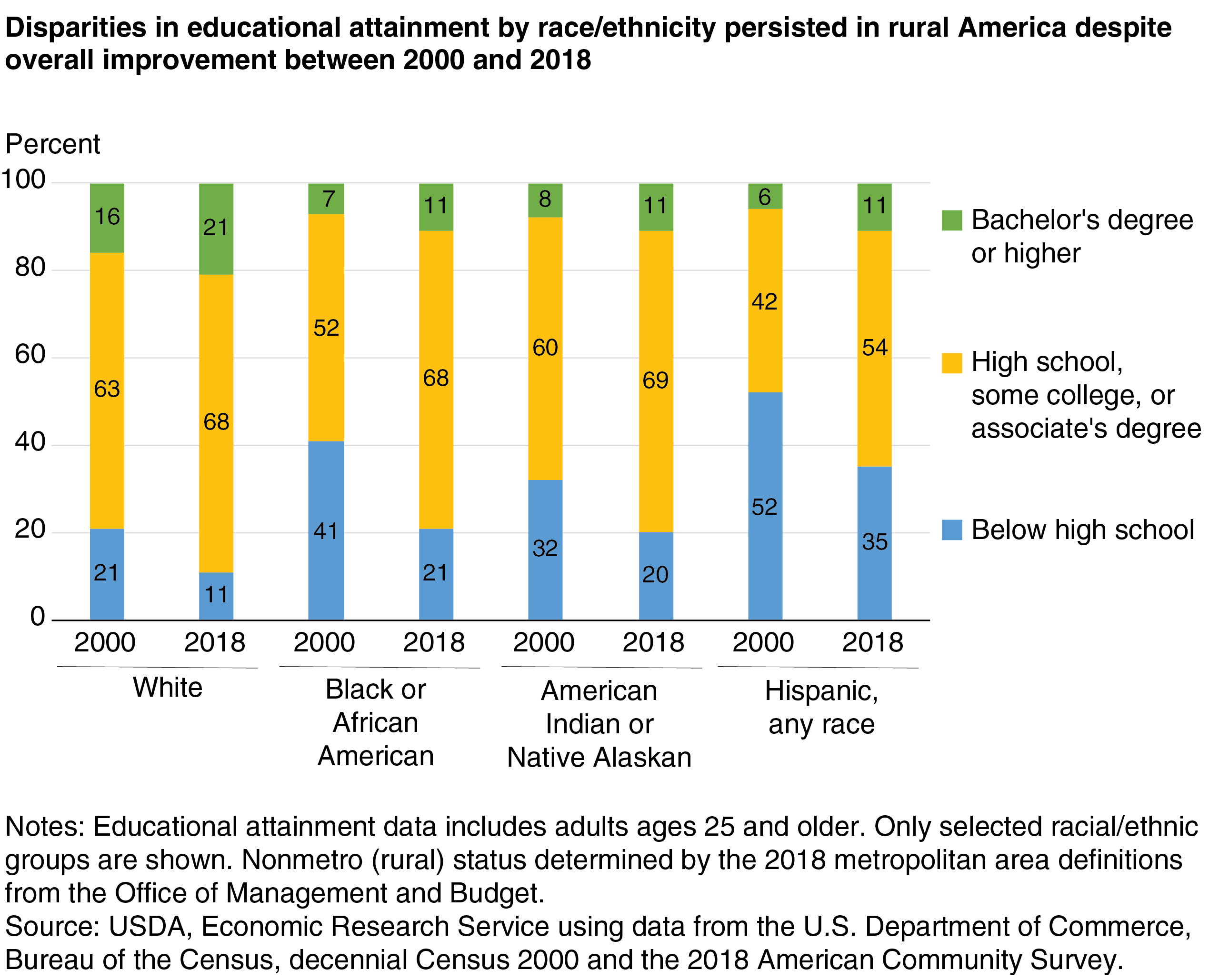
Racial and Ethnic Disparities in Educational Attainment Persist in Rural America
- by Tracey Farrigan
- 11/2/2020
In the United States, most of the population has completed high school, and a rising number have gone on to earn a college degree. The highest level of education completed is measured in the population by educational attainment, and higher educational attainment is associated with higher median earnings, higher employment rates, and greater workforce opportunity. While these educational attainment levels vary by factors including age, geography, household structure, income, and wealth, differences along racial and ethnic lines are particularly pronounced.
In rural areas of the country, ethnic and racial disparities persist in education, according to USDA, Economic Research Service researchers who studied data from the decennial Census and the American Community Survey. The research shows that Hispanic, Black or African American, and Native American or Alaska Native groups continue to have lower rates of educational attainment than Whites. Although the educational attainment of these ethnic and racial minority groups increased over the last two decades, they remained only half as likely as Whites to have a bachelor’s degree or higher in 2018 (the most recent year of data available). Asian Americans (not shown in the chart) were the only rural racial minority group to have a higher percentage with a bachelor’s or advanced degree (40 percent) than Whites (21 percent) in 2018.
Among all rural residents who are 25 years old or older, the percentage who had completed a bachelor’s degree or higher rose from 15 percent in 2000 to 20 percent in 2018. Conversely, the share of the rural population 25 or older without a high school degree or equivalent dropped from 24 percent in 2000 to 13 percent in 2018. Among racial and ethnic groups in rural America, Hispanics continued to have the highest percentage (35 percent) without a high school degree, despite significant gains in high school and higher educational attainment rates between 2000 and 2018. Over the same period, Blacks/African Americans had the largest decrease (20 percentage points) of rural individuals without a high school degree. This change eliminated the gap between the shares of Blacks/African Americans and Whites who had graduated from high school but had not completed a bachelor’s degree. Nevertheless, the share of Blacks without a high school degree remained nearly double that of Whites in 2018.
This article is drawn from:
- Employment & Education. (n.d.). U.S. Department of Agriculture, Economic Research Service.
- Marré, A. (2017). Rural Education at a Glance, 2017 Edition. U.S. Department of Agriculture, Economic Research Service. EIB-171.
You may also like:
- Rural Poverty & Well-Being. (n.d.). U.S. Department of Agriculture, Economic Research Service.


